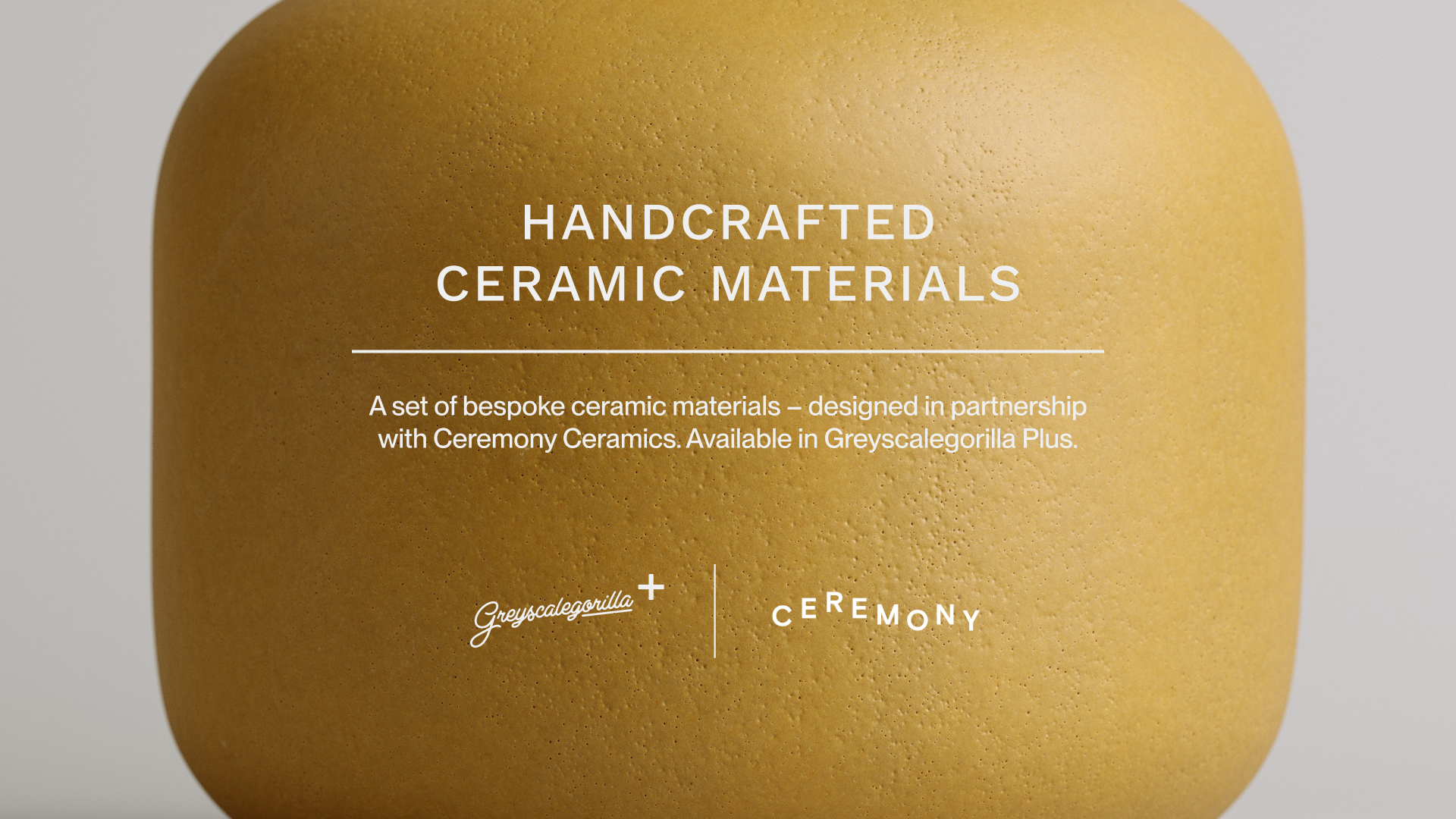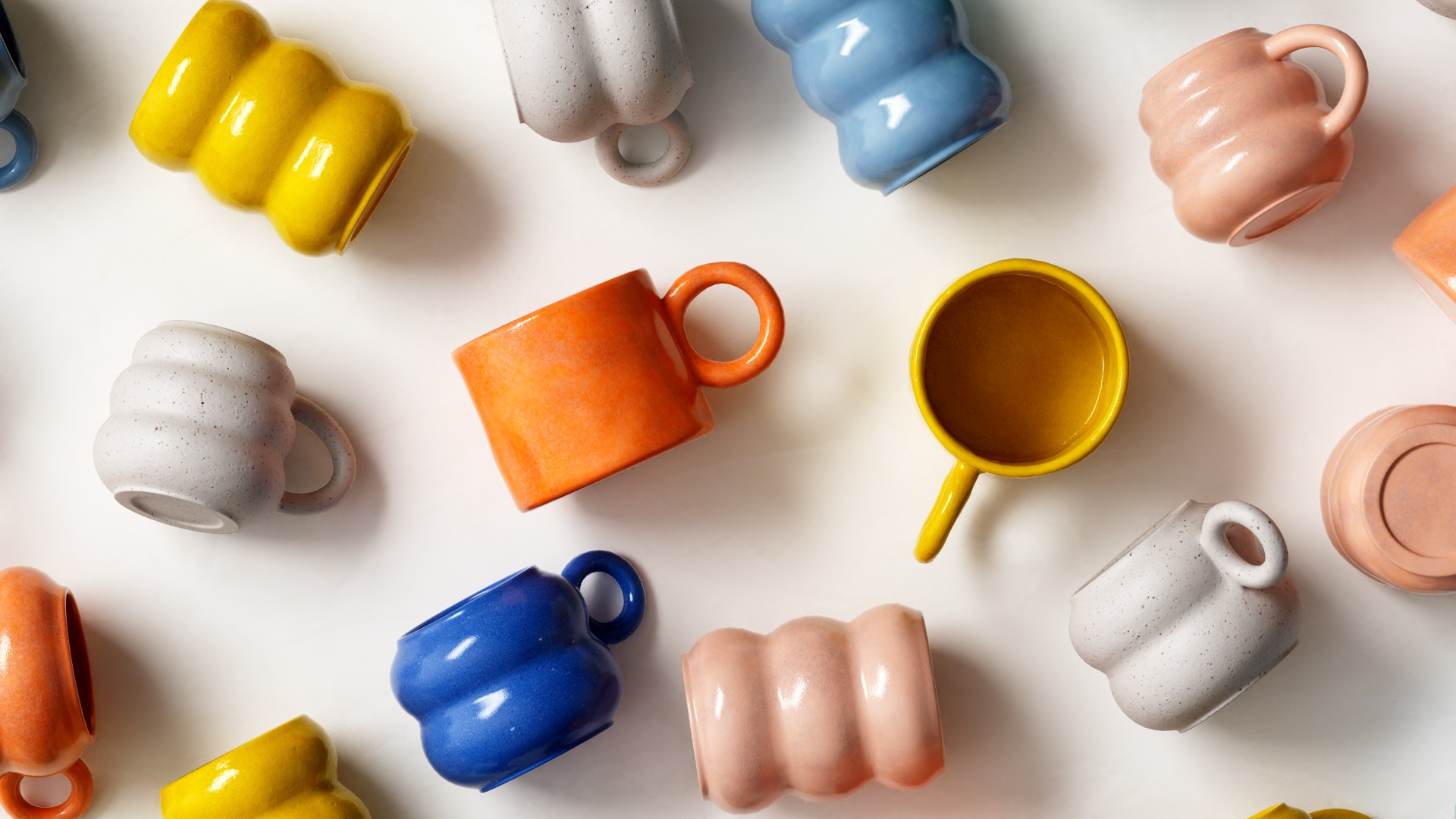
From Their Studio to Yours: Turning Real Ceramics into Render-Ready Materials
Created in collaboration with Ceremony Studio, these handmade ceramic materials bring real-world texture into your digital work.

Lately, we’ve been noticing a shift. Artists are being asked to create work that feels more human. More tactile. Less clean and computer-perfect.
We had a hunch…
So we followed that instinct. And we took it somewhere unexpected: into a real ceramics studio. We partnered with Ceremony Studio, a working ceramicist based out of Seattle and Las Vegas, to create a set of custom glazes. Not for physical mugs or plates, but for your next render.
The goal? Capture the imperfect beauty that only comes from handmade materials. Scan it. Build it. Then drop it right into your 3D workflow.
This is the story of how we did that, and why it’s one of our favorite collections yet.
A Studio-to-Studio Collaboration
Ceremony Studio doesn’t do mass production. They hand-glaze every piece in small batches, combining earth, water, and fire through a process they describe as a “sacred and ceremonial” process. That thoughtful, intentional approach was exactly what we needed.
Founded by artists Stephanie Hsie, Karen Chung, and Corey Gutch, Ceremony’s work is rooted in intention and heritage. They started with hand-thrown teacups inspired by Korean and Taiwanese symbolism, and that same artistry shaped every glaze they developed for this collaboration.
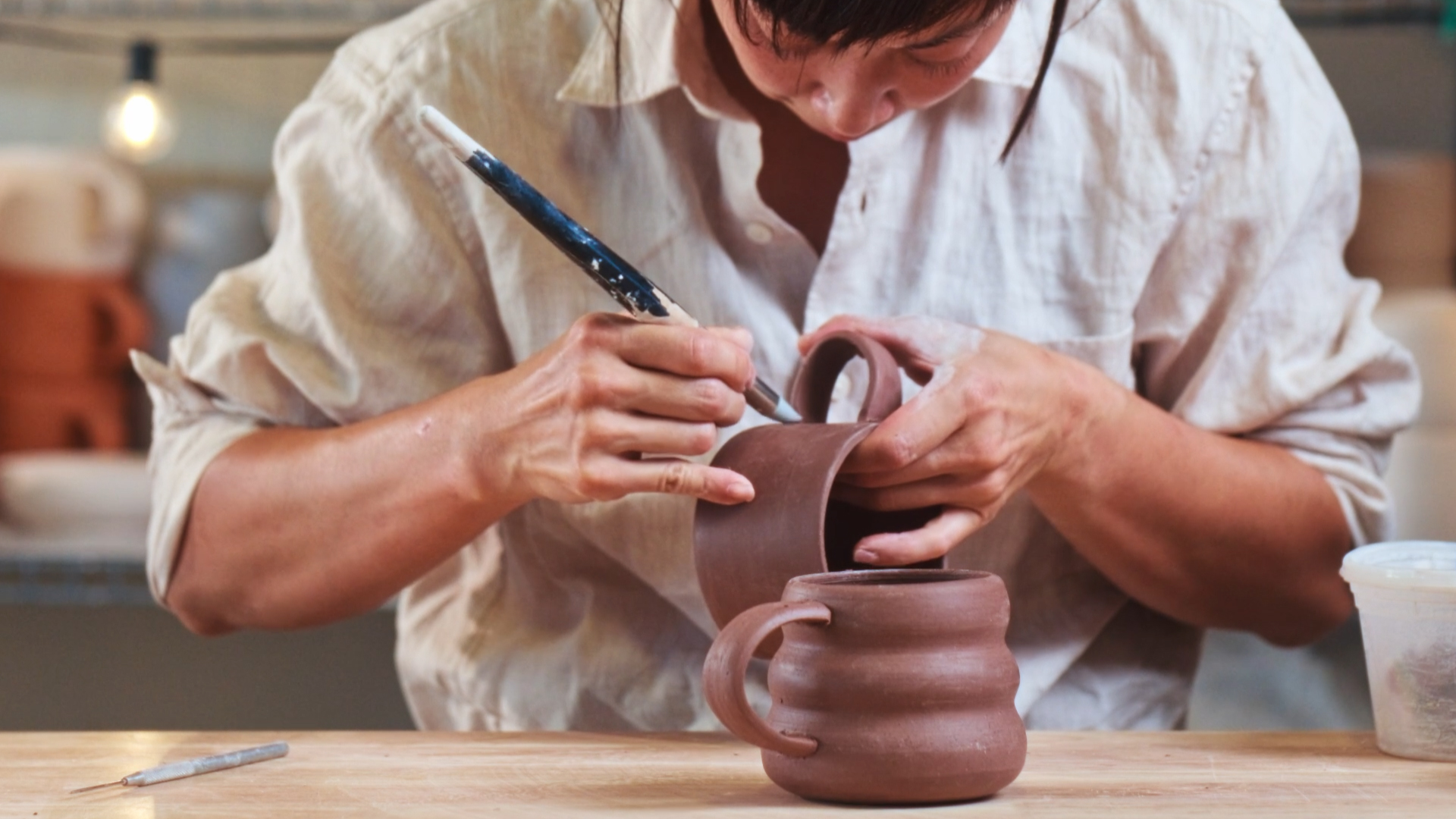
We came to them with a brief: create ceramic glazes with character that felt rich, tactile, and nuanced. They responded with a collection that felt alive. We worked closely through multiple glaze tests, tweaking colors and refining textures until each one matched our vision.
For this collaboration, Ceremony created 12" x 12" glaze tiles using both custom and commercial glazes. Glaze making is a blend of art and science. Different minerals are measured and mixed to control how the glaze flows during firing and what texture it creates when cool. We went back and forth, tweaking formulas to dial in each effect. Some tiles needed a matte finish with subtle texture. Others required high gloss and smooth surfaces. The goal was a palette that felt earthy yet playful, giving digital creators a real range to work with. Once we had it right, they shipped the finished tiles to us for scanning.
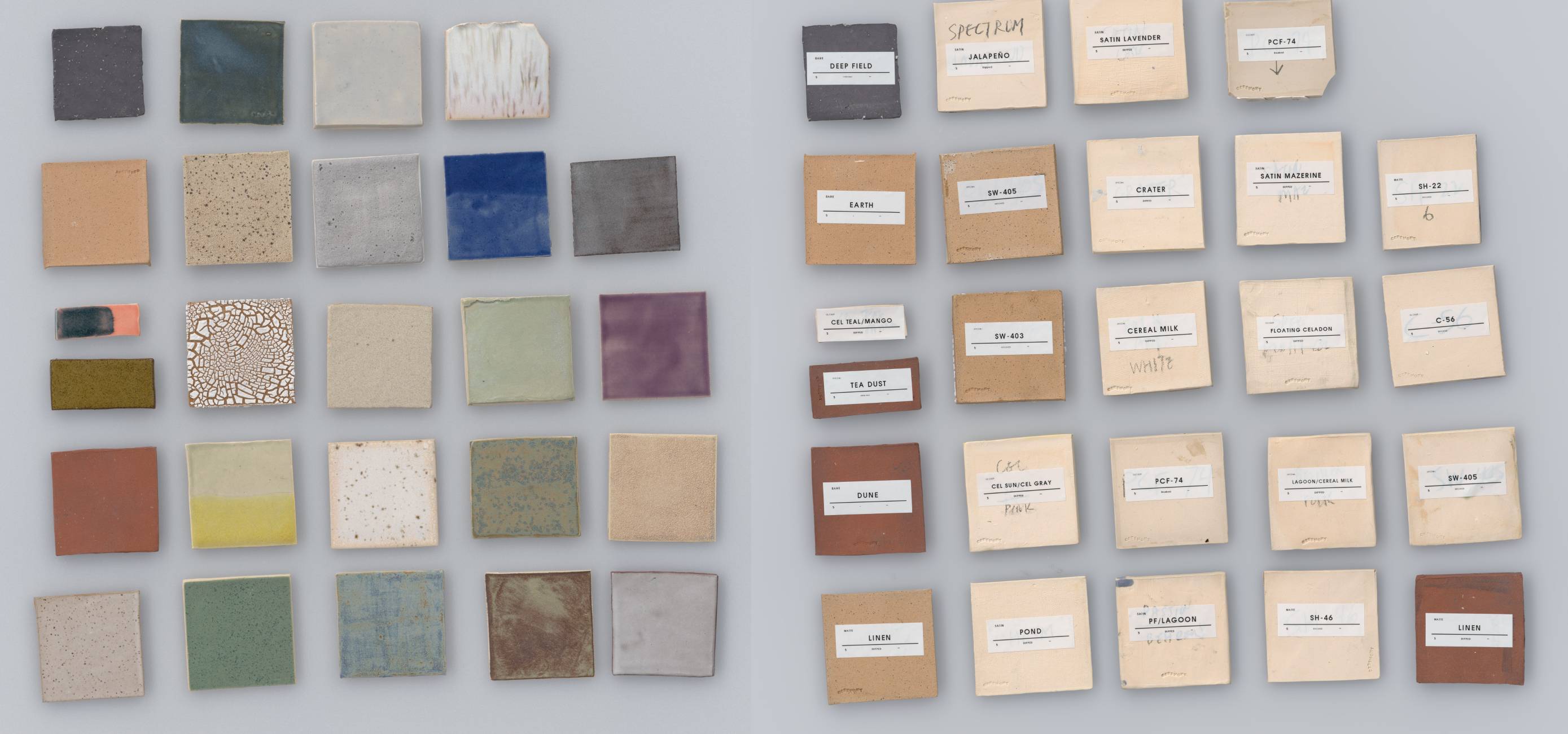
The level of detail in the final scans came through beautifully. Every glaze pooling in the recesses, every subtle color shift where the glaze breaks over texture, every natural imperfection from the firing process came through. You can see where the glaze ran thicker in one area and thinner in another. You can trace the variations in speckle patterns and how light interacts differently across matte and glossy surfaces. These aren't simulated textures trying to look handmade. They're actual handmade materials, captured with enough fidelity to bring that same warmth and irregularity into the digital space.
How We Made It Render-Ready
Then it was our turn.
We scanned each ceramic surface in high detail, capturing the subtle drips, cracks, brush strokes, and color variations.
Our team took those high-fidelity scans and meticulously crafted photorealistic materials. With the real ceramic samples on hand, we built true 1:1 digital doubles of these beautiful glazes, each one designed to look and feel just like the real thing.
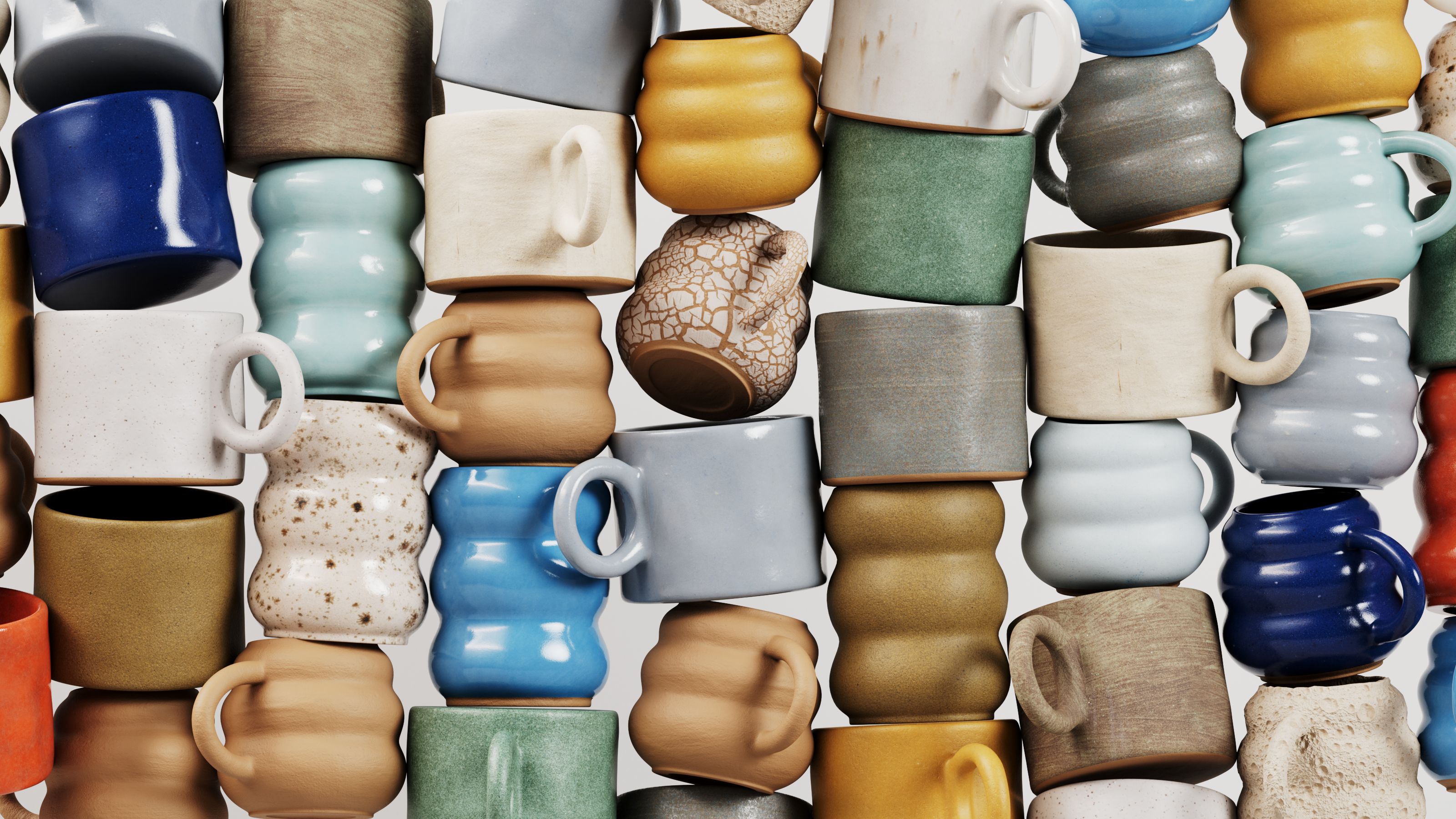
From there, we tested them under every lighting setup to make sure they looked stunning and worked right out of the box.
It was a lot of work. And it was worth every second.
From Their Studio to Yours
We’re proud of this one. Not just because the materials look great (they do), but because it represents what we care about: craft, collaboration, and helping artists do their best work.
These materials are available now inside Greyscalegorilla Studio. If you’ve been looking for something that feels truly handmade, this is it.
